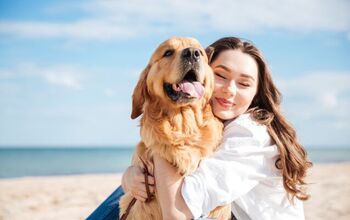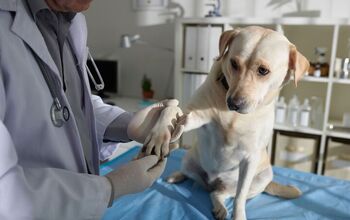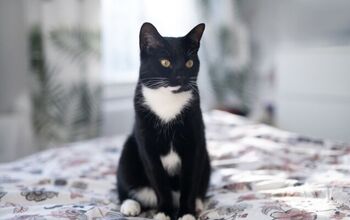Yorkinese


About Yorkinese
A proud pooch with a regal bearing, the Yorkinese holds a lot of love and affection for his special human(s). This designer dog breed is among the more popular in his group, and once you meet this cute hybrid- it’s crystal clear why. Smart, sweet, but still with a dose of independence to them, Yorkinese or Yorkingese dogs have a special charm. In addition to a great personality, these petite doggos also boast adorable looks- they tend to have soft fine hair, cute floppy ears, and, more often than not, the most adorable overbite.
As a crossbreed, the lovely Yorkinese owes his many qualities to his purebred parents. This designer dog breed was developed by crossing a Yorkshire Terrier to a Pekingese, in an effort to produce a new hybrid. The goal was to combine the best traits of both parents into one dog, and the endeavor was a success. The little Yorkinese usually inherits qualities from both his mom and dad- and each dog is unique.
However, that uniqueness of the Yorkinese and other designer dogs also means that they have varying looks and temperaments. To really understand what makes a Yorkinese tick and what does it take to be a good pawrent to one of these hybrids, you really have to learn all about them before adopting one. So buckle up and read on!
Smart, sweet, but still with a dose of independence to them, Yorkinese or Yorkingese dogs have a special charm.
Before the late 1980s, the term designer dog breeds didn’t even exist, let alone be a global trend. When an Australian breeder crossed a Labrador to a Poodle in an effort to develop world’s first hypoallergenic seeing eye dog, he didn’t have a clue that he’d be paving a path for many other hybrids to come. The creation of the Labradoodle inspired many to try and develop crossbreeds of their own, with different combinations of purebred parents. However, while there’s enough information about the origin of designer dogs in general, as well as some of the more prominent breeds, there’s not much we know about how individual mixes came to be. The fact that there have been mixes of certain purebreds throughout history doesn’t make it easier to pinpoint the moment when that crossbreeding became intentional.
The Yorkinese might be one of the more popular designer dog breeds, but their origin is still a riddle. The best guess anyone can have is that the Yorkshire Terrier and Pekingese mix came to be in the United States, sometime in the last 30 years. However, just because they have an enigmatic past doesn’t mean that these hybrids are somehow mysterious.
By looking at the histories of his parental breeds, we can learn a lot about the Yorkinese. The Yorkie started out as a working dog, and his terrier drive is still present in traces, even in the breed’s mixes. The Pekingese had quite a different story, being an ancient breed favorited by Chinese royalty and nobles. Regardless of their contrasting backstories, though, both the Pekingese and the Yorkshire Terrier have been selectively bred for decades to fill the role of companions and family pets. And it’s those qualities that are more apparent in their crossbreed offspring, the sweet Yorkinese.
The Yorkinese is a cross between a purebred Pekingese and a purebred Yorkshire Terrier. In other words, this designer dog is a 50/50 percent of the two purebreds, which is also called a first generation mix. While this is the most common type of designer dogs, first generation hybrids have the most varying traits. When the parents are so different, it’s hard to predict which of them will be more dominant in the mix. For instance, sometimes the Yorkie’s genes could be more influential so some of the puppies in the litter could resemble this breed more than the Pekingese and vice versa. However, the most common scenario is that the first generation litters of this mix inherit traits from both of the parents, often each with their unique “twist” to it.
While the fact that each Yorkinese is one of a kind is very appealing to many pet owners, some breeders still strive to create a uniform breed out of this mix. To do so, they have to do multigenerational breeding, often by introducing other unrelated Pekingese or Yorkies to the gene pool. Alternatively, they can breed Yorkinese to other Yorkinese. The result with this type of selective breeding is that there’s less variety and ‘surprises’ across the breed, and there are certain traits you can expect with certainty. Of course, as this is still a young breed, it’s rare to come across a multigenerational Yorkinese.
Dogs are omnivores and need to eat a little bit of everything to stay healthy and happy. The diverse diet of canines is often best mimicked with high-quality dry food, as premium kibble tends to include all nutrients a dog needs to thrive. The Yorkinese will do well on dry food that’s specially formulated to meet his own unique dietary requirements. Choose kibble that’s made from premium or human-grade ingredients, and avoid cheap foods full of fillers and additives. In addition, the food you choose for your Yorkinese should suit their size, activity level, and age (puppy, adult, senior). Usually, a small breed or toy breed formula is a good match.
A small breed dog with a healthy appetite, Yorkinese will try to eat more than his fill. To prevent your petite pooch from overeating, don’t give them more than ½ to 1 cup of kibble per day. Usually the manufacturers of dry food print out the feeding guide on the kibble bag, so you’ll be able to find the exact amount. Additionally, you should opt for serving that daily dose of kibble split into two meals rather than leaving it out in the bowl for your pet to free feed.
Owing to their low-maintenance exercise needs, the Yorkinese is a good choice for seniors or people who live in an apartment.
The Yorkinese is not the best choice for a first-time dog owner. These hybrids are moderately difficult to train, but without any previous experience working with dogs, they will seem like quite a challenge. Owing to his parentage, this crossbreed will be intelligent, but also stubborn, independent, and quite willful. If they deem your training sessions too boring, or simply decide that today is not the day they want to spend on learning, they’ll budge and refuse to cooperate. Of course, with the right approach, you can coax even the toughest of cookies to work with you.
First of all, you have to resist the urge to baby your doggo while they’re still in training. If they realize they are actually the boss of you, all your effort to teach them will be in vain. So you need to assert yourself as the pack leader, by being confident and consistent in your behaviors. Use positive reinforcement methods to train your Yorkinese- rewarding them with their favorite treats for a job well done will do wonders when it comes to their motivation.
In addition to basic obedience training and potty training which are the starting point for most pet parents, it’s important to pay attention to socialization, as well. Teach your pooch to be friendly and easy-going by exposing them to different situations, strangers, children, and other pets while they’re still young and easy to “mold”.
As the offspring of two breeds from the toy group, the Yorkinese will also be a small dog. On average, these hybrids weigh between 5 and 12 pounds. They are not too tall, either, and stand at 6 to 9 inches high at their shoulder.
The Yorkinese is a hybrid, and a first generation one at that- which means that there’s no way of telling what the puppy’s traits will be. Some might take up after their sassy, lively Yorkie dad, others might favor the proud and independent Pekingese. However, despite the fact that each of these dogs will be unique, there are some common personality traits they all share.
The Yorkinese will be very affectionate and cuddly with his closest family members, but not so much with strangers. They are not aggressive towards people they don’t know, but they are aloof and distrustful. Their alertness and suspicion of strangers make them good watchdogs- even though their petite size prevents them from acting on their protective and territorial tendencies.
These designer dogs are confident and energetic, but they are also prone to small dog syndrome. This won’t make them a favorite with other canines in the house or the neighborhood, so make sure to prevent this behavior on time.
Many people believe that mixed breed dogs, such as the Yorkinese, are healthier than purebreds. While there is some truth to that in certain situations, it’s not an unwritten rule. A lot will depend on the individual dog. Good breeding and healthy parents can go a long way for their health.
But, despite the good genes, your Yorkinese could have any of the common health issues for his parents. These include patellar luxation, collapsing trachea, eye issues such as cataracts or entropion, portacaval shunt, and Legg-Calve-Perthes Disease.
Not unlike most petite pooches, the Yorkinese also has a relatively long lifespan. On average, these hybrids have a life expectancy of 13 to 16 years.
A spirited little pooch, the Yorkinese has moderate activity requirements. They will need circa 45 to 60 minutes of daily exercise, but nothing too exerting- especially if they inherit the flat face of their Pekingese parent. Take them on a few short walks or engage in fun games in the outdoors. It’s important for your pooch to get some fresh air each day, despite the fact they can exercise indoors.
Owing to their low-maintenance exercise needs, the Yorkinese is a good choice for seniors or people who live in an apartment.
The Yorkinese is not the best choice for a first-time dog owner.
His parents might be purebred dogs, but the Yorkinese is not a “real” breed- at least not in the eyes of the American Kennel Club and its international counterparts. On the other hand, there are many smaller canine organizations that accept designer dogs and strive to create better standards for all hybrid breeds. The Yorkshire Terrier and Pekingese mix is recognized as the Yorkinese breed by the American Canine Hybrid Club, Designer Breed Registry, Designer Dogs Kennel Club, Dog Registry of America, and International Designer Canine Registry.
The Yorkinese will have long hair, but the quality of the coat will largely depend on which parent’s genes are more influential in the mix. If he takes up after the Yorkie, he’ll have fine and silky hair that flows down his body. In the case that the Pekingese genes dominate, the hair will be coarse and somewhat wiry. In any case, these dogs are cute as they come- and fairly easy to groom. They’re not high maintenance and will do well with a few brushings a week to keep their coat in control and prevent matting.
As for the colors, there are many possibilities. From the light and dark bi-color combinations typical for the Yorkie to a whole palette of shades and markings Pekingese flaunts. The variety only adds to the breed’s appeal!
Yorkinese puppies are small and feisty, and will be mischievous like all puppies usually are, However, as they are tiny and fragile, it’s best to keep a close eye on your fur baby at all times- it’s easy for them to get injured.
Once they’re a few weeks old, you can start introducing training and socialization to your routine. The earlier you start, the better! Teaching your puppy manners while they’re still young will help ensure they mature into a well-behaved, friendly dog.
Photo credit: PicturesOfThings/Shutterstock

A proud mama to seven dogs and ten cats, Angela spends her days writing for her fellow pet parents and pampering her furballs, all of whom are rescues. When she's not gushing over her adorable cats or playing with her dogs, she can be found curled up with a good fantasy book.
More by Angela Vuckovic
























